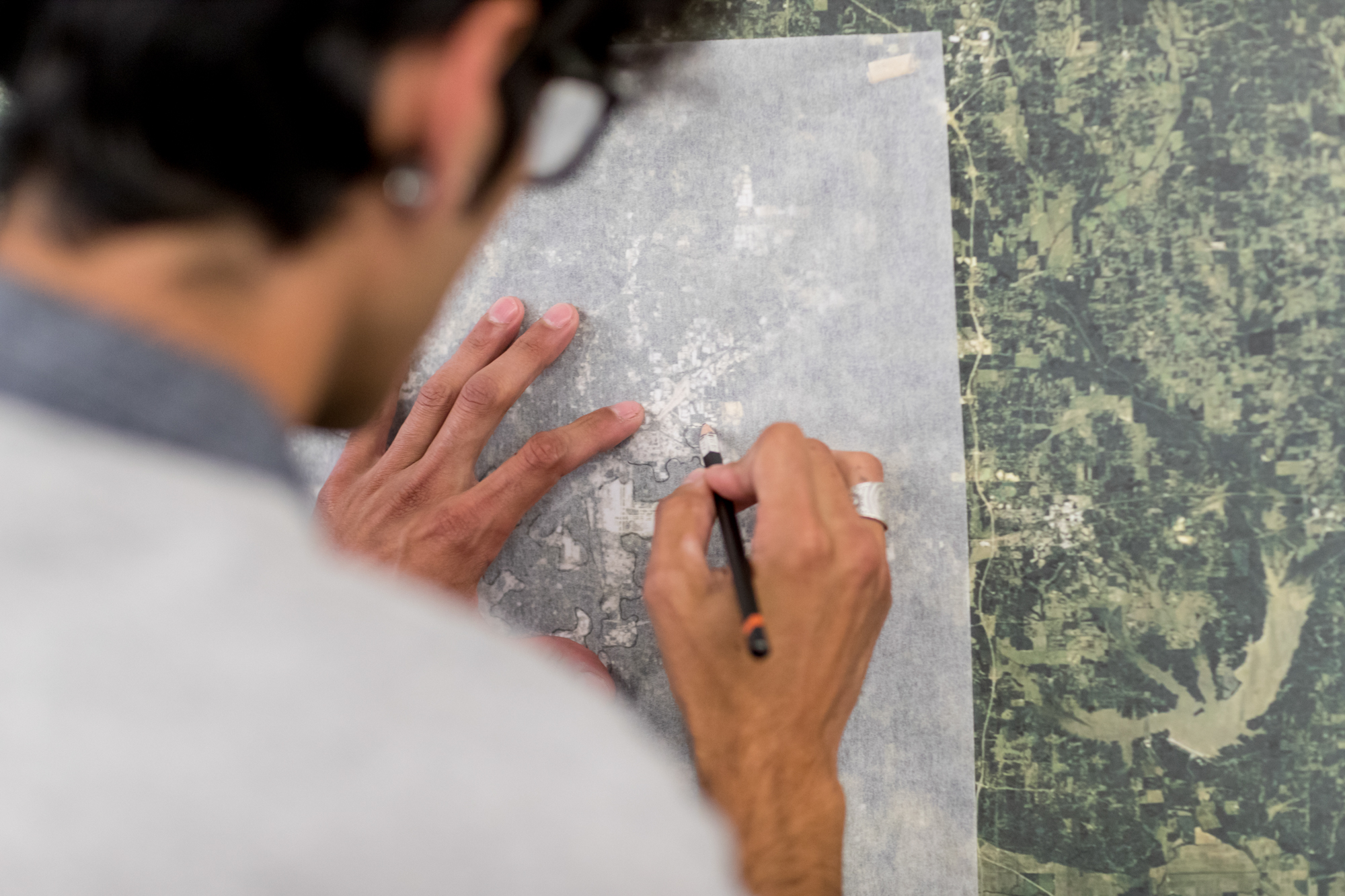This year marks the 50th anniversary of our Department of Landscape Architecture. To celebrate, we’re highlighting work by our students, faculty, and alumni that represent the future and history of the department.

In an increasingly digital world, it’s easy to lose our sense of place. Rebecca Krinke (Landscape Architecture) works with community engagement and public art to explore connections between land, people, emotions, and ideas. Her focus is on the physical and face-to-face interactions, but recently she partnered with the U’s Borchert Map Library team to use GIS for an online Mapping of Joy and Pain.
A new project is just beginning on people and place – the Dakota Language Table. With support from a Knight Foundation grant, Krinke and her partners in the Healing Place Collaborative—a Dakota-led group of artists and professionals exploring how the Mississippi is a place that can heal and is in need of healing—will create an adaptable table that will travel throughout the Twin Cities to host conversations about Minnesota as Dakota homeland. Through interactive mapping and educational programming, the Dakota Language Table will facilitate learning about Dakota language, history, and relationship to place.
This new initiative draws from Krinke’s experience in Mapping Spectral Traces, and from leading an ongoing public art, oral history, and design project: the Mapping of Joy and Pain. In the summer of 2010, when Krinke and her students took a seven by five foot wooden map of the Twin Cities to several metro-area parks and invited passers-by to map where they had experienced joy and pain.
Ryan Mattke, director of the U’s Borchert Map Library, was intrigued, and asked her to display the wooden map in his library. To expand the map beyond Minneapolis-Saint Paul, Krinke and Mattke launched an online, interactive version in collaboration with map library curator Kevin Dyke and MGIS candidate Maureen McFarlane on International GIS Day (November 30, 2015).
Because these projects combine the latest GIS and online communication technologies with hand-drawn maps and face-to-face interactions, they have the potential to engage a wide range of participants. The results are a rich representation of our emotional landscapes with the potential to foster empathy and strengthen communities.
High above the Arctic Circle in the fishing village of Vardø, Norway sits the Steilneset Memorial. Created by architect Peter Zumthor and artist Louise Bourgeois, the memorial remembers the 91 women and men who were burned at the stake after being found guilty of sorcery in 1621.
There are 25 statues honoring historical figures in New York City’s Central Park. They include a sculpture of a Polish king, a Venezuelan military leader, a Prussian naturalist, and even a sled dog. But not a single one of these statues is in honor of a historical woman.
Led by Professor Tasoulla Hadjiyanni (Interior Design), the Culturally Enriched Communities (CEC) Initiative champions healthy and connected communities in which everyone can thrive.





